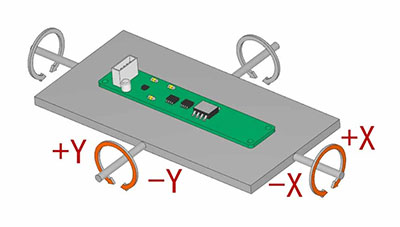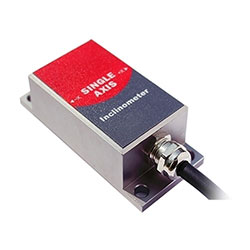Inclinometer Sensor Basics: Types, Advantages and Working Principle
A inclinometer sensor is a device used to measure the tilt angle of an object. The principle is based on the effects of changes in resistance, capacitance, and magnetic induction in physics. Inclinometer sensors are often used for precise measurement of changes in the horizontal angle of objects. They can be used to measure the inclination of the measured plane relative to the horizontal position, as well as the parallelism and perpendicularity of the two components; It has become an indispensable and important measuring instrument in fields such as bridge erection, railway laying, civil engineering, oil drilling, aviation and navigation, industrial automation, intelligent platforms, and mechanical processing.
The Working Principle of the Inclinometer Sensor
A inclinometer sensor is a sensor used to measure the tilt angle of an object. Its working principle is based on the influence of gravitational acceleration. Inclinometer sensors typically include an oscillator or an accelerometer to detect the direction of gravity acceleration. In a horizontal state, the direction of gravitational acceleration is vertical downwards. When an object tilts, the direction of gravitational acceleration changes.
The inclinometer sensor calculates the tilt angle of an object by detecting changes in the direction of gravitational acceleration. Sensors can convert tilt angles into voltage, current, or digital signal outputs for use by other devices.
Type of Inclinometer Sensor
The inclinometer sensor is usually used to measure the horizontal distance of the system and the height of the object. According to its working principle, it can be divided into three types: solid vibration, liquid vibration, and gas vibration. These three types of inclinometer sensors utilize Earth's gravity to convert the physical quantities of the position angle between the sensor and the Earth into analog signals or pulse signals. For inclinometer sensors based on solid vibration, liquid vibration, and gas vibration principles, each sensor has its own advantages.
- Solid State Inclinometer Sensor
The sensitive mass of solid vibration is the mass of vibration; The steady-state balance inclinometer sensor has clear length and center, and its mechanism is basically the same as that of an accelerometer. In fact, there are a wide variety of products such as electromagnetic pendulums, which have a wide measurement range, high accuracy, and strong overload resistance, and are widely used in weapon systems. - Liquid Inclinometer Sensor
The vibration sensitivity of liquids is the sensitivity of electrolytes; The liquid angle sensor system is stable and widely used in high-precision systems. Domestic and foreign products mainly belong to this category. - Gas Vibration Angle Sensor
The sensitive mass of gas vibration is gas; Gas is the only moving body in gasket components, with low mass, high impact force or inertia during overload, and strong vibration or impact resistance. However, the monitoring of gas movement is complex, with many factors affecting its movement, and its accuracy cannot meet the requirements of military weapon systems.
Advantages of Inclinometer Sensor
- High Precision
The inclinometer sensor adopts microcomputer control technology and advanced sensing technology, with high measurement accuracy and can reach the micro arc level. Meanwhile, due to the reasonable design structure of the sensor, the measurement results have good repeatability and stability. - Fast Response Speed
The inclinometer sensor adopts digital signal processing technology, which has fast response speed and can achieve high-speed control and data acquisition. It is suitable for applications in high-speed motion control systems and fast adaptive systems. - Easy Installation
The installation of the inclinometer sensor is very simple, just place the sensor in the position where it needs to be measured and connect the power and signal wires. In addition, the sensor has a smaller volume and weight, which will not affect the tested object.
- Multiple Application Fields
Inclinometer sensors are widely used in various fields, such as robotics, aerospace, rail transit, construction engineering, geological exploration, etc. It can measure the inclination angle and inclination direction of objects to control and monitor their motion status and position. - High Reliability
The inclinometer sensor adopts highly reliable sensor and electronic components, which have the characteristics of long lifespan, low energy consumption, and anti-interference. In complex environments and harsh conditions, sensors can also maintain stable performance, ensuring the accuracy and reliability of data.
Inclinometer sensors are widely used in various fields, including industrial automation, construction engineering, aerospace, robotics, automotive, surveying, and geographic information systems (GIS). They are used to monitor and control the tilt of objects to ensure that equipment or structures are in the correct position, or for navigation and positioning applications. The selection of inclinometer sensors usually depends on specific application requirements, such as accuracy, environmental conditions, and cost factors.

